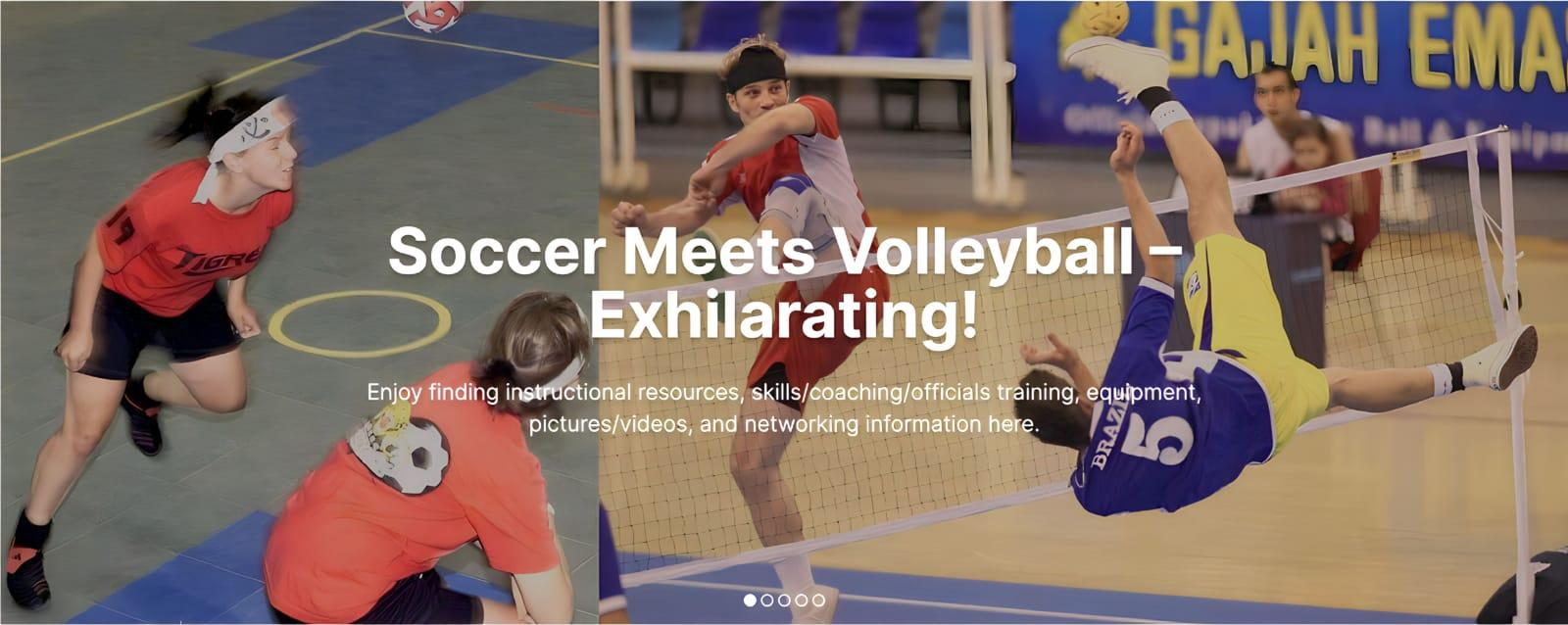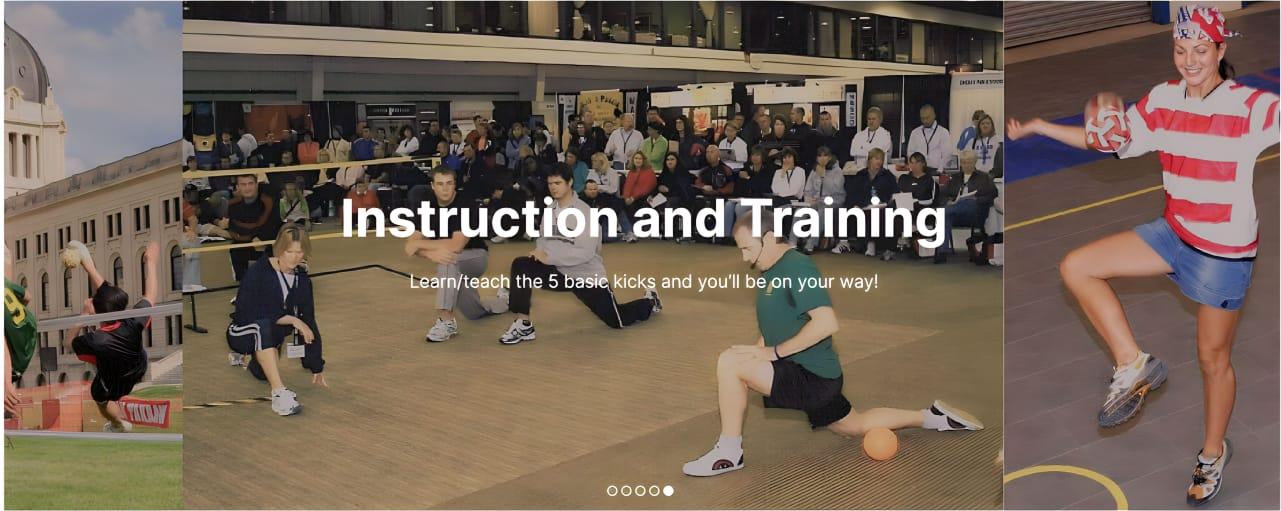OFFICIAL SEPAK TAKRAW RULE CHANGES & RATIONALE INTRODUCED IN 2011/12
International Sepak Takraw Federation (ISTAF) Technical Meeting & AGM, Bangkok, 16-17 January 2011
(Re-written to be clearer with consistent terminology … some numbering is different than seen in ISTAF’s version of the Rules)
**These new rules are the ones that affect local programs, clubs, schools, provincials & nationals in Canada
**Amendment 1, Rule No. 2.1 & 3.5, Post & Net Height (Team, Regu, Doubles) | ||
Previous Rule | New Rule | Rationale for Amendment |
The posts shall be 1.55 m, or 5 ft 1 inch (1.45 m, or 4 ft 9 inches, for women) in height from the floor and shall be sufficiently firm to maintain high net tension. They should be made from strong materials and shall not be more than 0.04 m, or 1 ½ inches, in radius. | The posts shall be 1.55 m, or 5 ft. 1 inch, in height from the floor for both men and women and shall be made of strong materials and of sufficient firmness to be able to maintain high net tension.
The top of the net shall be 1.52 m, or 5 ft, in height from the floor at center court for both men and women, and 1.55 m, or 5 ft. 1 inch, at the posts. | ISTAF wishes to create a uniform net height for men and women: v it will simplify tournament operations, and reduce the cost of net-post production; v it will lead to greater athleticism and longer rallies in the women’s game (both better for TV).
|
Amendment 2, Rule No. 5.5.1, Reduction Of Team Squad Size (Team Event Only) | ||
Previous Rule | New Rule | Rationale for Amendment |
Each “Team” shall consist of a minimum of 9 players (3 “Regus” of 3 players per “Regu”) and a maximum of 15 players, which allows for 2 “Reserve Players” per “Regu” to be included, BUT ONLY 12 PLAYERS MAY BE REGISTERED PRIOR TO A TEAM EVENT GAME (in other words, a coach must decide which of the two reserve players on each Regu would be most ready to be substituted in if necessary). | Each “Team” shall consist of a minimum of 9 players (3 “Regus” of 3 players per “Regu”) and a maximum of 12 players, which allows for ONE “Reserve Player” per “Regu” to be included. Though ALL players must be registered in order to participate in a Team Game, three (3) players of the 12 must be registered as substitutes. | v If teams have fewer players, more ISTAF members may consider hosting Sepaktakraw tournaments – the catering, accommodation and transportation costs will be reduced. v Substitutes must be identified in advance to avoid key starting players “doubling up” and participating in more than one Regu. |
Amendment 3, Rule No. 6.5, Names / Sponsor Logos on Shirts (Team, Regu, Doubles) | ||
Previous Rule | New Rule (made into 6.5 & 6.6) | Rationale for Amendment |
All jerseys/T-shirts are to be numbered at the back. A player must be assigned with one permanent number throughout a tournament. Each participating Regu or Team is allowed to use only numbers 1 to 36. The size of the number shall not be less than 19 cm, or 7 ½ inches, in height. Optionally, a number on the front of a jersey may be up to 10 cm, or 4 inches, in height. | All jerseys/T-shirts shall be numbered on both the front and back. A player must be assigned only one (1) permanent number, from 1 to 36 only, to be used throughout a tournament. The size of the numbers shall be not less than 19 cm, or 7 ½ inches, in height on the back, and not less than 10 cm, or 4 inches, in height on the front (top-center or sides chest area).
For International Competitions, players’ names must be placed on the back of the playing shirt above the number, and be of sufficient size to be visible on television. Playing shirts may also carry a sponsor logo on the front of the playing shirt, subject always to the applicable tournament regulations. No other commercial identification (other than a manufacturer logo) may appear on any player attire. | v Player names have been added to help spectators identify players, and to help create global stars for the game. v Shirt sponsorship is now also permitted to allow for additional commercial revenue to be created, but this needs to be carefully controlled. |
**Amendment 4, Rule No. 7.3, Substitutions (Team, Regu) | ||
Previous Rule | New Rule | Rationale for Amendment |
Each “Regu” may nominate none to a maximum of two reserve players, BUT CAN MAKE ONLY ONE SUBSTITUTION IN A MATCH. | Each “Regu” may nominate up to a maximum of two (2) substitutes for any match, in addition to the three (3) starting players. Each Regu may make up to a maximum of TWO (2) SUBSTITUTIONS PER SET. All substitutions are subject to the authorisation of the Court Referee, and must be executed at the side of the court in view of the Match Referee. Substitutions may only be made when the ball is not in play. One (1) or more substitutions may be made at the same time. If a Regu starts a set with different players from those who finished the previous set, each change shall be considered as a substitution which has taken place in the new set. | Increasing substitutions has several benefits: v tactical substitutions create more interest for spectators and TV audiences; v more players will get tournament experience - the international talent pool will increase, and weaker teams will be become more competitive; v all 5 players have the opportunity to participate in a match (currently only 4 players may do so); v a Regu will be allowed to use any 3 of its 5 players to start a match, which creates more tactical choices for coaches; v a clearer procedure for substitutions will be established.
|
**Amendment 6, Rule No. 8.1 – 8.4, Match Officials (Team, Regu, Doubles) | ||
Previous Rule | New Rule | Rationale for Amendment |
The game will be managed by Referees, Assistant Referee and Linesmen.
Canada has already previously changed this rule to be clearer, by separating each of the Referee Positions into separate points and already has much more detailed information than indicated to the right, explaining rolls of each one, so only needs to change titles as follows: Official Referee to Court Referee Head Referee to Match Referee Assistant Referee to Assistant Match Referee “Line Judges” will remain as is for STAC and its affiliates (instead of “linesman). | Each match must be officiated by a Match Referee (stationed at one end of the net), an Assistant Match Referee (stationed opposite the Match Referees), a Court Referee (stationed behind the Match Referee), one (1) Line Judge* to the right of the Match Referee along the side-line, and one Line Judge* to the right of the Assistant Match Referee along the side-line. The Match Referee will also be supported off-court by the Official Referee. * ISTAF used the term “Linesman”, but STAC suggests that “Line Judge” is a better and more politically correct term than “Linesman” (which is gender discriminatory). | It is important to identify the number, roles and positioning of each match official in the Laws of the Game. This will help the OCs for multi-sports games understand the technical requirements of the sport. It is also important to separate the rule relating to match officials from the rules relating to serving. |
Amendment 5, Rule No. 9.1, Coin-Toss (Team, Regu, Doubles) | ||
Previous Rule | New Rule | Rationale for Amendment |
Before commencing the game, the Referees will toss a coin or disc in front of the captains and the Regu winning the toss shall have the option of “Choosing Service” or “Choosing Side”. The Regu that loses the toss will abide by the decision. | Immediately before the start of a match, the Court Referee will conduct a coin toss in the presence of the opposing captains. The winner of the coin toss may elect to either (a) serve or receive, or (b) choose which side of the court to start the match from. The loser makes the remaining choice. The side that loses the coin-toss will abide with the Court Referee’s instructions. | It is important to determine a clearer procedure by which ends and servers are selected. |
**Amendment 7, Rule No. 11.1, Serving (Team, Regu, Doubles) | ||
Previous Rule | New Rule (made into 11.1 – 11.4) | Rationale for Amendment |
The Regu that serves first (according to the toss decision) shall start the first set. The side that wins the first set shall begin serving in the second set. | The Regu that serves first (according to the toss decision) shall start the first set and serve for the first three (3) points, followed by the other side serving for three (3) consecutive points. Both sides alternating serving in this way after every three (3) points, regardless of which side wins a point. At deuce, the serve shall alternate on every point. The side which “receives” last in any set shall serve first in any subsequent set. Players shall switch ends before the start of each set. | Limiting each side to 3 consecutive serves will: v reduce the importance of the serve and allow other all-round skills to flourish; v prevent teams with a dominant server from accumulating a large number of consecutive points (which is not good for TV); v make teams without a strong server stronger and more competitive; v reduce the number of points which are won through the serve alone (which is not good for TV).
|
**Amendment 8, Rule No. 13.2, Points Per Set (Team, Regu, Doubles) | ||
Previous Rule | New Rule | Rationale for Amendment |
The winning point for a Set is 21 points, unless the points are tied at 20-20, then the Set shall be decided on a difference of two points, up to a ceiling of 25 points. When the score is tied at 20-20, the Referee announces “Playing up to 25 points”.
| The winning point for a Set is 15 points, by a minimum lead of 2 points. If the score is tied at 14-14, the Match Referee will announce, “Deuce, playing up to 17 points”, and play continues until the Set can be decided on a difference of two points, up to a ceiling of 17 points. If the score is then tied at 16-16, then the side to earn the next point wins.
| Limiting sets to 15 points for Regu: v Levels the playing field for all teams v creates more excitement for TV: it is easier for weaker teams to score 15 points than 21 points, and thus makes them fight harder; v makes it less easy to predict a winner, which will appeal to betting partners and TV audiences; v reduces spectator boredom when one team has a big lead; v For Team competitions, this will shorten the overall playing time (Team will be over 2 sets). |
**Amendment 9, Rule No. 13.3, Sets Per Match (Team, Regu, Doubles) | ||
Previous Rule | New Rule | Rationale for Amendment |
A Match is played in two OR three sets with a 2-minute rest in between each set. | Each match will be determined on the basis of a best-of-5-sets format, with a 2-minute break between sets. The only exception is for Team Event matches, where each match will be played on the basis of a best-of-3-sets format (and a tie-break set of 15 points, up to a ceiling of 17, if necessary) with a 2-minute rest between sets.
| This will: v create a more attractive TV product (each match can develop a story, and teams which make a slow start can make an exciting come-back); v Place more emphasis on player fitness; v allow players to play in longer matches against the best teams, thereby improving their own standards.
|
**Amendment 10, Rule No. 14.1, Tactical Time-Outs / Water-Breaks (Team, Regu, Doubles) | ||
Previous Rule | New Rule (made into 14.1 & 14.3) | Rationale for Amendment |
An automatic 1-minute “Time-out” will be given to each Regu in the first two sets when one Regu reaches 11 points. During the Tiebreak Set an automatic 1-minute “Time-out” will be given to each Regu when one Regu reaches 8 points. During the time-out, players must go outside the court, behind the baseline. Only 5 persons are allowed behind the base line during a time-out. | Each side will be entitled to ONE (1) TACTICAL TIME-OUT IN EACH SET, with each such time-out to last a maximum of one (1) minute. During the time-out, players must go outside the court, behind the baseline. Only 5 persons are allowed behind the base line during a time-out. For television-broadcasted international events, there may be an automatic “refreshment break”* in each set, lasting (30) seconds, after the first side has reached 8 points. During such refreshment break, players must remain within the playing court, and coaches are prohibited from entering the playing court.
* An automatic “Refreshment Break” on top of the substitutions and breaks between sets is not necessary at the local school, recreation, provincial or even national levels (as the inclusion of this into the rules is primarily for broadcasting purposes at major international events). | This will: v increase spectator interest by introducing tactics to the time-out decision; v make coaches develop time-out tactics; v result in closer matches, by allowing a team which has lost momentum to stop play and re-group; v appeal to broadcasters by creating additional advertising opportunities; v provide a drinks sponsor with exposure opportunities. |
**These new rules are the ones that affect local programs, clubs, schools, provincials & nationals in Canada

















